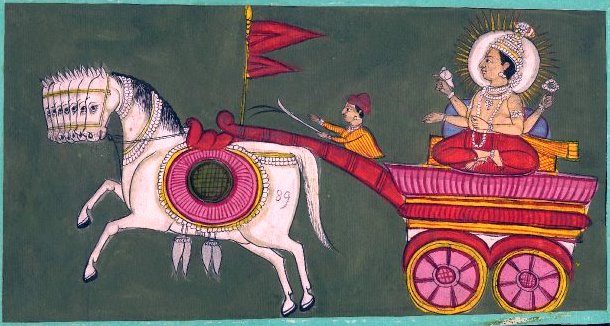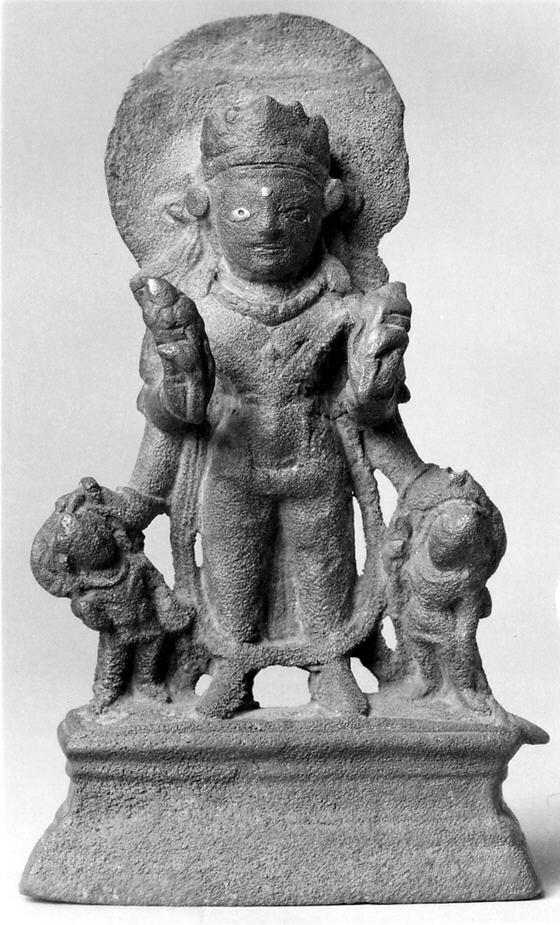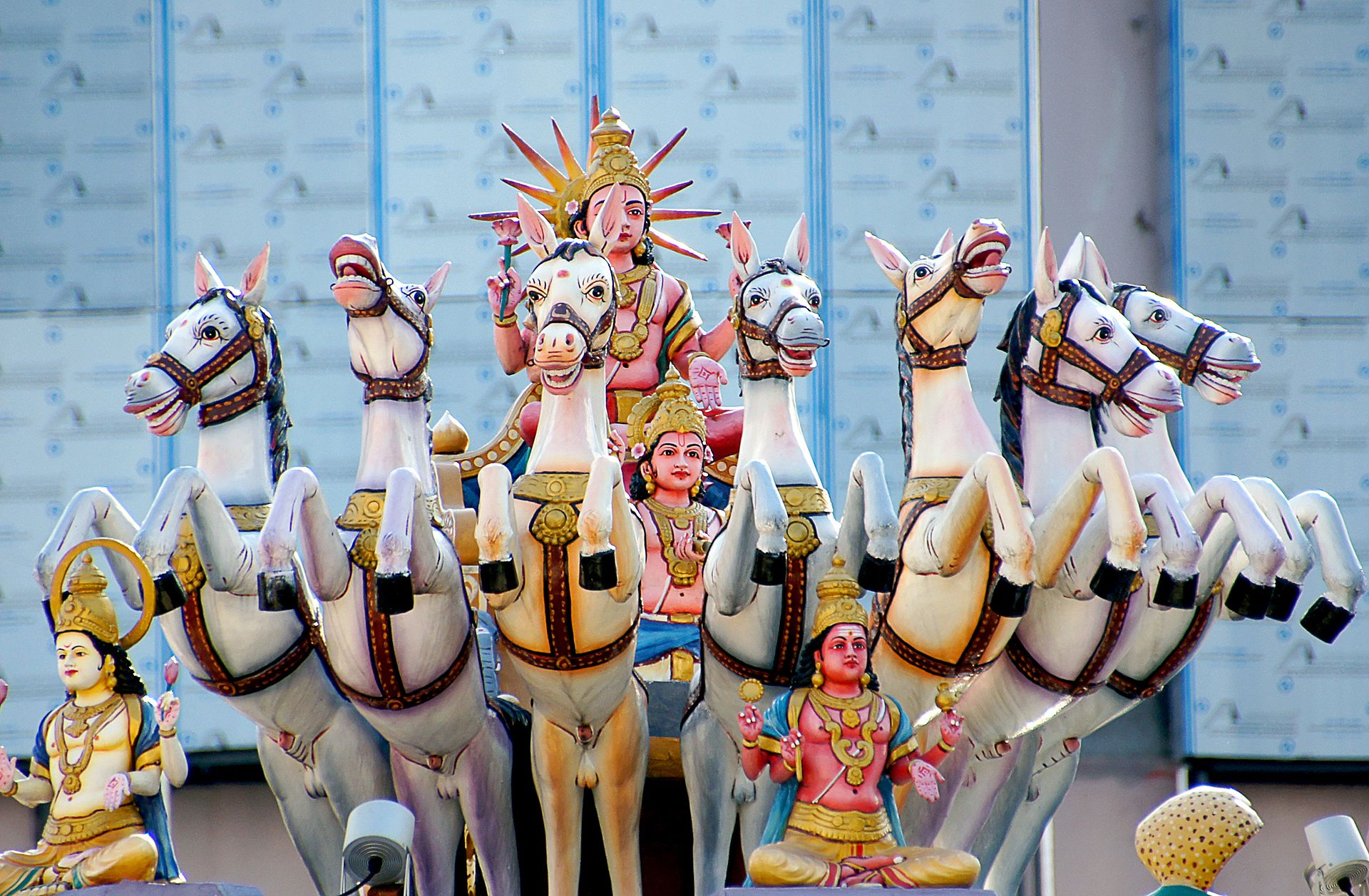A solar deity’s history, art and link to yoga
At the centre of our solar system as a fiery star or essentially a wild nuclear reactor, our sun beckons me each morning when unencumbered by billowing clouds. Waking I wander outside onto the balcony and look to the sun and sit for a few minutes with my head tilted to the sky. Only eight light minutes away in contrast to most other stars which are many light years away, the sun warms me. It amazes me as it provides nourishment to us as its fiery being bathes us all in its resplendent light. It even replenishes needed vitamins in our bodies. It’s been a lifelong adoration for me looking towards the sun.
As a teenager, my friends and I spent a lot of time lying in the sun. We naturally wanted to be in it. I still want to be in it as much as possible. It cultivates life and life is vitality. It makes our life on earth possible and as both a creator and destroyer I remain well aware that it can blind us and obliterate life as well. Without it, we wouldn’t exist so it’s no wonder that humans have worshipped it through the ages.
Throughout recorded history, we even have tried to model the sun into a being through our personification of it as a deity. The sun has taken the form of gods such as Ra (Egyptian), Helios (Greek), Sol (Roman), Surya (Indian and others), Zora (Slavic) and others. In this series I wanted to explore Surya as a deity further through its mythology, art and as an act of worship before coming to be a regular part of yoga. Surya in Hindu scriptures as a solar deity includes many myths and like so many other Hindu gods is venerated through art in sculpture and in paintings. He is also linked to a sequence of yoga poses called Surya Namaskara or Sun Salutations. In this article we’ll look at who Surya is and some of the artworks that depict him and a quick look at Surya Namaskar. In part II, we’ll delve deeper into sun salutations as they are practised today as a part of yoga and the history behind them.
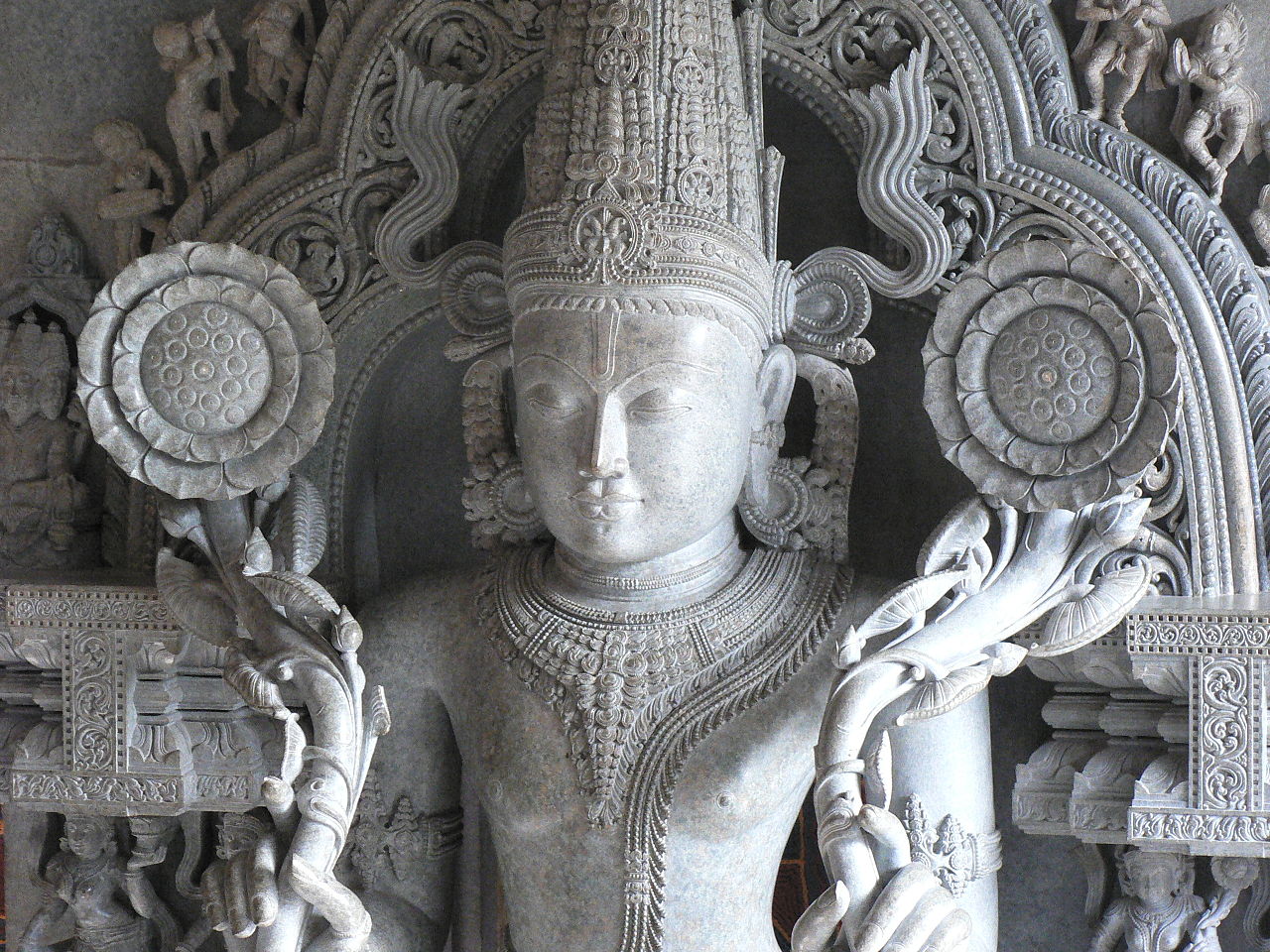
Surya as the visible form of God
In Hindu religious scriptures, Surya is identified as the visible form of God that anyone can see. In the Vedic conception, he is the God of light, literally the source of all forms of life. like any other divinity of the Hindu pantheon, has its own precise representation. Hinduism personifies practically every aspect of life, associating it with a divinity, with a characteristic of the divine that is then worshipped on the basis of the qualities it manifests in the personification in question. So the wind is not just moving air but it is Vayu, the fire is Agni, the ocean is Varuna, the ether is Akash and so on for all five elements (Pancha Maha Bhuti) and for every other characteristic of the divine manifestation.
The chief sun deity, Surya, is described with golden hair, golden arms and even his tongue is golden. His three eyes are golden orbits through which he looks at the world and which gives him the name of Loka Chakshu, the eye of the world. He crosses the sky on a golden chariot driven by seven white horses that symbolize the days of the week. His coachman is Aruna, a singular character, he is called the red and is the older brother of Garuda. When dawn appears in the skies, personified by a beautiful woman called Usha, Surya begins to pursue her and her light shines through the translucent body of Aruna, and that is why early in the morning we can see the red sun.
Of course, Hindu gods are numerous and we have also sometimes overlap or distinctions between them and frankly, it can be quite confusing at times. There is also Savitr who is sometimes identified with, and at other times distinguished from, the chief Sun deity Surya. However, it turns out that the distinction is primarily that Surya as the chief sun deity represents the sun after it has risen and before it sets riding his chariot across the sky to defeat the demons of darkness. Whereas, Savitr is the action or phenomenon of the setting and rising sun.
The Shaivites and the Vaishnavas often see in Surya, respectively, an aspect of Shiva or Vishnu. The Vaishnavites call the sun Surya Narayana and in the Shivaita theology, Surya is one of the eight forms of Shiva, called Astamurti (from the eightfold form). Surya is the main among the Navgraha, the nine planets, which revolve around him.
Surya in Art
Surya as a deity is not limited to Hinduism and can also found in the arts and literature of Buddhism and Jainism which span large geographical areas.
In art, Surya although described with golden hair, he rarely is depicted that way in art. He wears a crown and in most cases shown with a lotus flower in each hand. He is also often shown with attendants. Sometimes with Usha and Pratyusha, the goddesses of the dawn. The goddesses are shown to be shooting arrows, a symbolism for their initiative to challenge darkness. Sometimes with 7 horses representative of the days of the week or 7 primary chakras. There are even architectural standards around deities in India that specify how to depict a god in temples. In his case there were some standards that had him with 2 arms and another with 4, although typically he is shown with 2.
Surya with Attendants, India 7th Century
Surya Mandala Art from the 14th century, Nepal
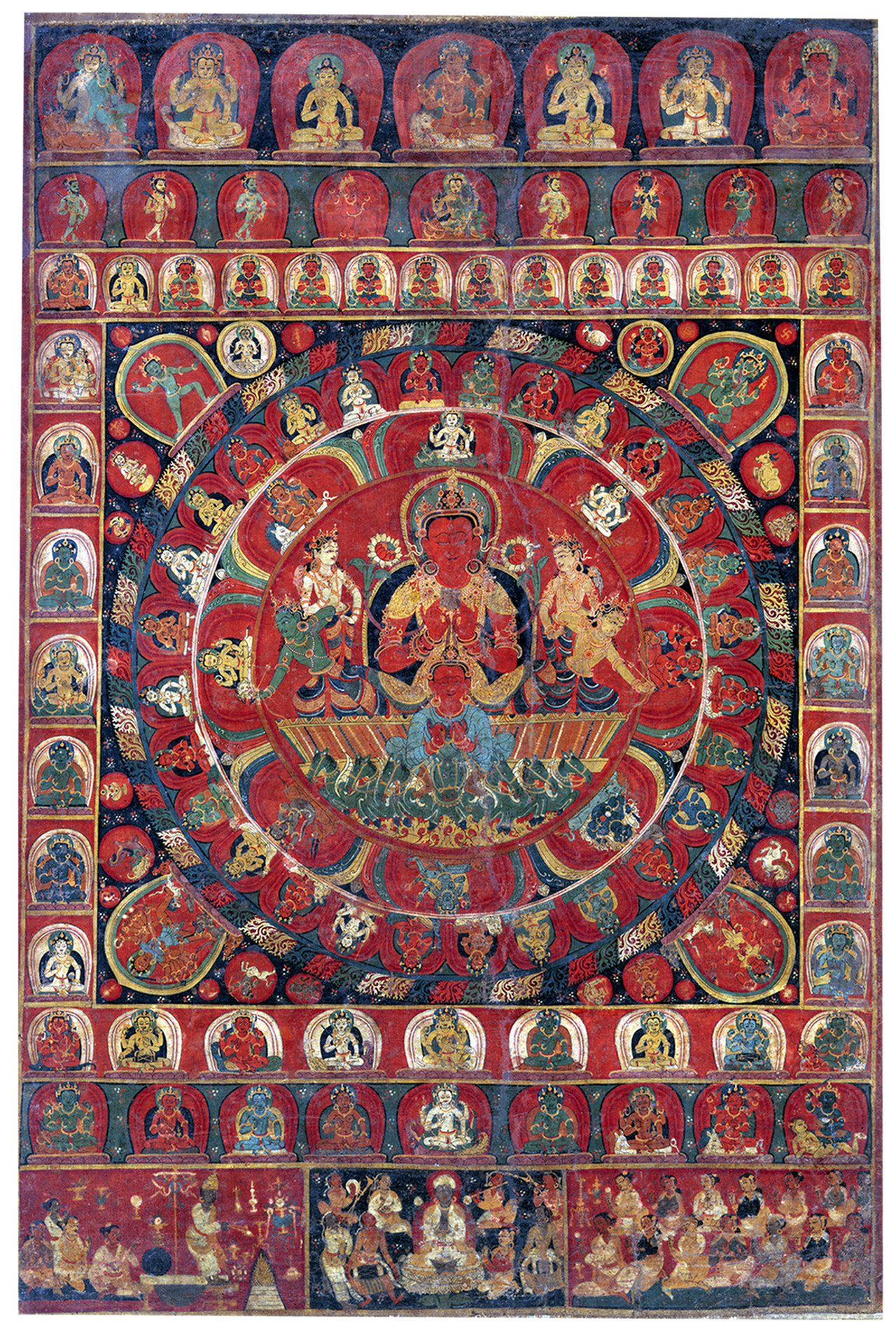
On view at The Met Fifth Avenue in Gallery 251
This mandala is devoted to Surya bears a partially legible date, making it one of only two confirmed Nepalese paintings of the fourteenth century. The inscription names the donor and the artist—the latter an extremely rare occurrence in Nepalese art—and declares that it was painted when the donor, named as Bhisnudevesvara, performed a ceremony so that he might be forgiven for negative karma. This ritual is depicted in the lower register, with a Vajracharya priest performing a fire sacrifice, and with the donor at centre. His family is also present, at right. The eight planetary deities ring the mandala.
The Hindu Sun God Surya with 7 Horses
Surya Namaskara or Sun Salutation
The sun symbolizing spiritual consciousness, in ancient times, was worshipped daily and considering the ancient origin of the cult of the god Surya in India, it would be rather naive to consider Sun Salutation as an invention of modern yoga. In ancient India the Surya Namaskara was intended as puja (“act of devotion”), to propitiate the benevolence of divinity. In the Surya Upanishad, it is stated that those who worship the sun as a symbol of Brahman acquire power, strength, intelligence and long life.
Since Vedic times, this type of practice could be witnessed, and although the original written sources are scarce, the oral tradition and the Vedic scholars refer to numerous practices directly attributable to the worship of the solar divinity. One of the oldest forms of sun prostration of Vedic origin was Trucha Kapla Namaskara, a practice included in Nitya Vidhi, the spiritual routine of a Hindu. Another was called Aditya Prasna. Both envisaged the use of the body as a means of worship. They practised at dawn, in the open air, standing on the ground facing the rising sun and offering water in ablution.
Today, Surya Namaskara or Sun Salutation as a part of yoga is a precise sequence of asanas meant to be practised in the early morning hours to greet the day. It is practised throughout the world by millions as a part of their daily yoga practice. Even though the practice of Sun Salutation is probably linked to these Vedic rites in homage to the sun, it’s only much later that it would become an integral part of yoga. And, for many yoga is more of a philosophy and a way of life, and not necessarily a ritual act linked with religion. In fact, for some who begin to practice simply for the physical and health benefits, sometimes find a new spiritual path open to them. You do not have to change your belief systems to receive the enormous benefits that a yoga practice can bring to you physically, emotionally and mentally.
Yet, Surya, the solar deity, continues to shine on the lives of millions of people everywhere and to dispense his blessings of prosperity, fame, success, and good health as he remains in the hearts of the untouched and irreplaceable devotees.
Contributor: Amber Valentine
Amber Valentine is a writer, researcher, translator and yogini. Read more about her here.



